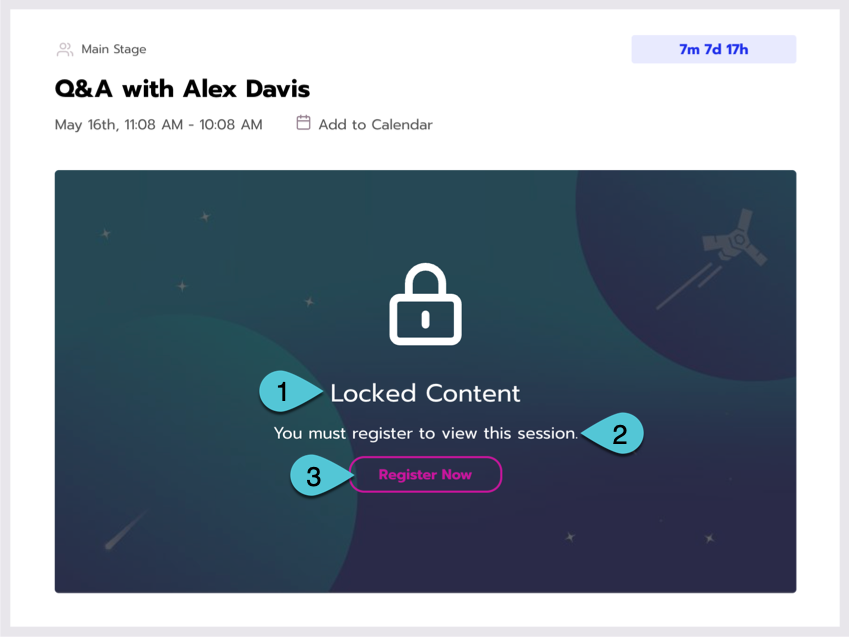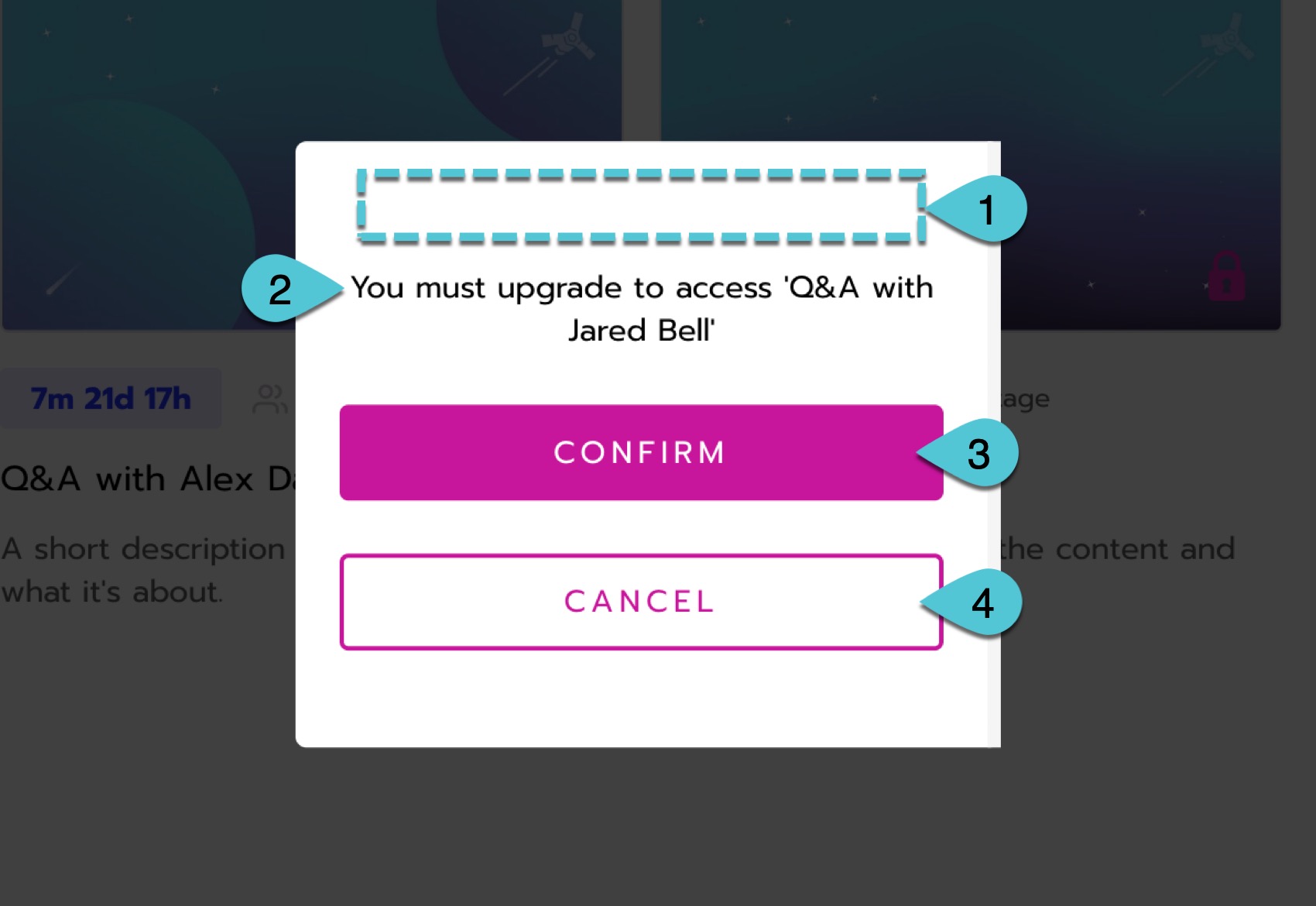Access levels on content
You can assign access level tags to content so that only users with the correct tag can access it.
|
|---|
This is only one of a few ways to manage user access to your site and content. To learn more about all of them, see Access types overview. |
Courses work differently than the other content types. Please see Course functionality constraints.
About access levels on content
After users log in, the system knows who they are. Now they can be restricted from certain pieces of content depending on their access level.
Access levels are created using tags. Add an access level type tag to:
The piece of content…
and to the users who you want to access it.
Anyone without the correct access level tag will see a lock icon on the content’s schedule listing or module image. If they click it to try to open the content page, they are prompted to upgrade.
For example, within an event site, you might create multiple ticket levels, with an access level tag for each one. For example, Registration Basic and Registration Advanced. Or define membership levels for your community platform, such as Free account and Member account.
An example of content that’s locked by an access level tag.
Using preview and access levels together
For public preview sites, access levels work a bit differently. If content was previewable when the user was logged out, it’s still previewable once they are logged in. It’s just not fully accessible unless they have the correct access level tag.
There is no lock icon on the content’s schedule listing or module image because users are allowed to open the content page.
For example, if you didn’t purchase a VIP ticket, you can’t fully access any content that has a VIP access level tag… But you can still preview it! The inaccessible page looks just like it did in preview. When you try to interact with it (for example, by adding a session to your calendar), you’re prompted to upgrade for full access to the piece of content.
An example of content that’s locked by an access level tag, but is still previewable.
What if a piece of content was never previewable? (You can set individual pieces as “do not preview” in the preview configurations.) In that case, the VIP content isn’t previewable even after logging in. There is a lock icon on the module and when you try to open the page you're immediately prompted to upgrade.
Assign access levels
Access levels are assigned to users during user import or user integration. They are added to content during content import or content integration. Or the JUNO team can assign access levels in the content management system.
It’s important to create an access level tag for each site on your platform, and assign them to all users who should have access. For example, Event Site Access and 365 Site Access. This makes it much easier to manage user access between sites. Even if you only start with one site, it's important for future-proofing because it makes the transition to a multi-site platform much easier.
Add access levels to content in the front-end editor
For sessions, in-person sessions, and on-demand content, you can also add or remove access level tags using the front-end editor. (As long as you are a site admin or have permission to edit that content.)
Find the settings in the session editor’s Information tab. See instructions: https://help.growthzone.com/clients/information-tab-session-editor#Informationtab:Sessioneditor-access-levelsAttendancecriteria
To manage access level tags for other content types, the JUNO team can help you configure the front-end editor to allow it. For example, it’s sometimes useful for exhibitors. Note that all access level tags from the database will display in the editor.
Access level configuration options
These configurations are applied throughout the whole site, rather than for individual pieces of content. But if you have a multi-site platform, you can configure each of your sites differently.
Access level image/video overlay
Users see an overlay on top of videos and images when they preview inaccessible content while logged in. For example, it’s applied to sessions, on-demand content, and exhibitor rotators.

An example access level overlay. See the table below for details.
Element | Options | |
|---|---|---|
1 | Title |
|
2 | Message |
|
3 | Action button | This button opens the access level pop-up (see below). |
Access level pop-up
Users see this pop-up when they try to view or interact with inaccessible content.

An example access level pop-up. See the table below for details.
Element | Options | |
|---|---|---|
1 | Title |
|
2 | Alert message |
|
3 | Confirm button | This button links users to another platform page or external website (like a ticketing/registration page). |
4 | Cancel button | This button usually closes the pop-up. Or you can configure it to link to another page. |
Required tags
By default, users only need at least one of the specified access level tags in order to access the content. You can change this:
Element | Options |
|---|---|
Required tags |
|
Front-end editor
By default, you can only use the front-end editor to add and remove access level tags for sessions, in-person sessions, and on-demand content. You can change this:
Element | Options |
|---|---|
Tags editor |
|
